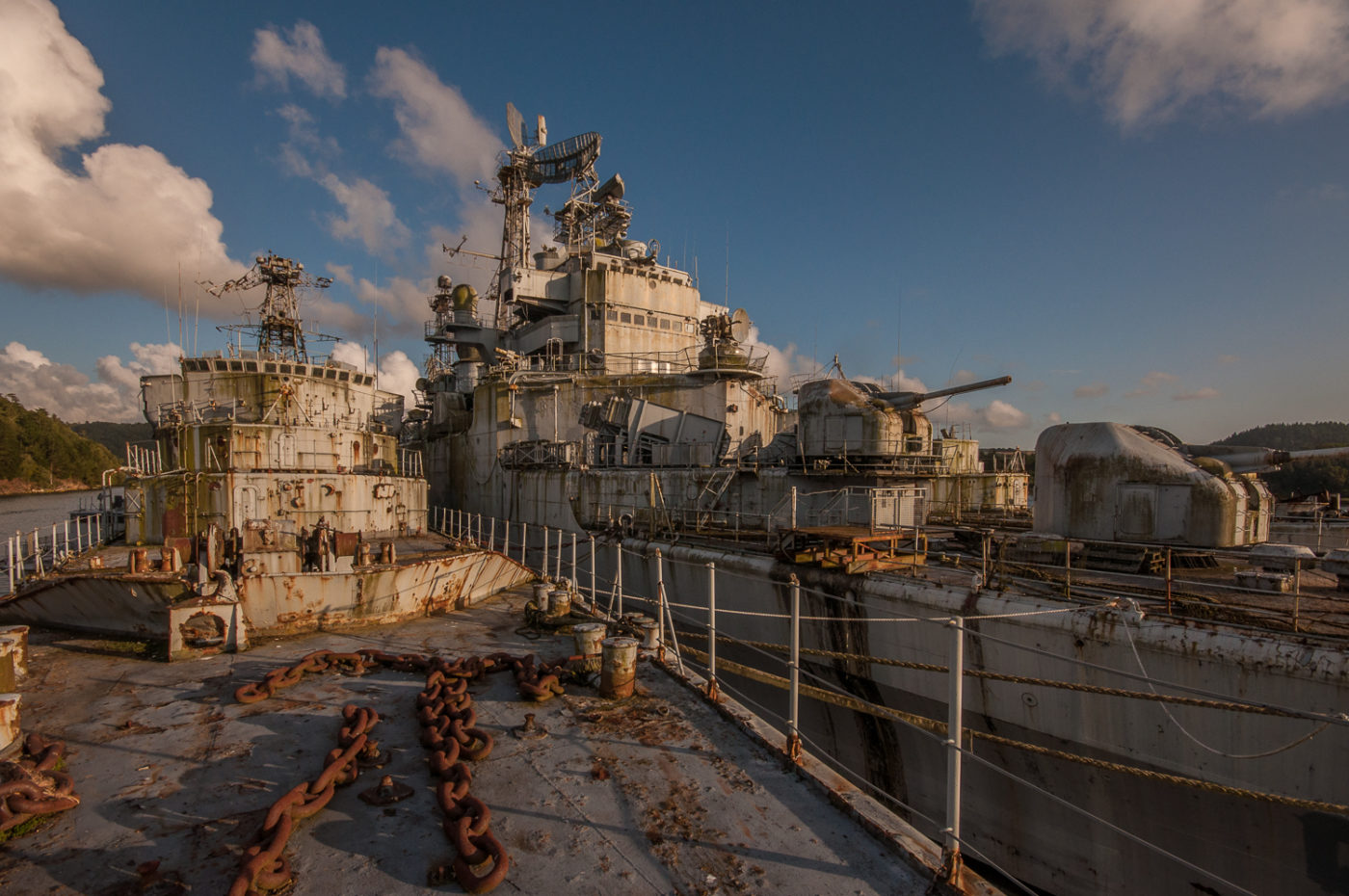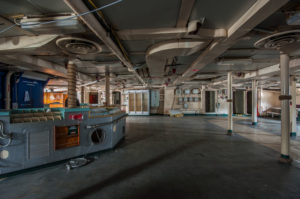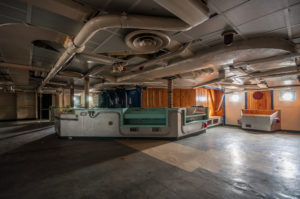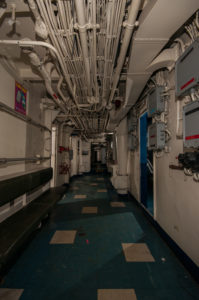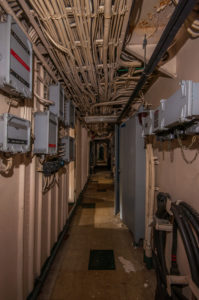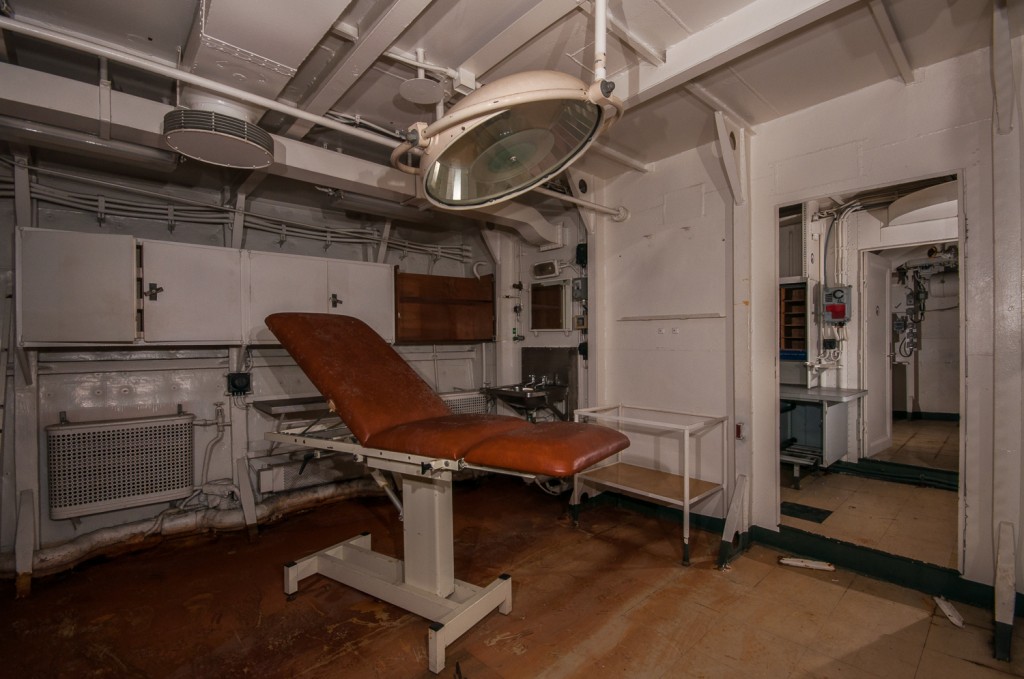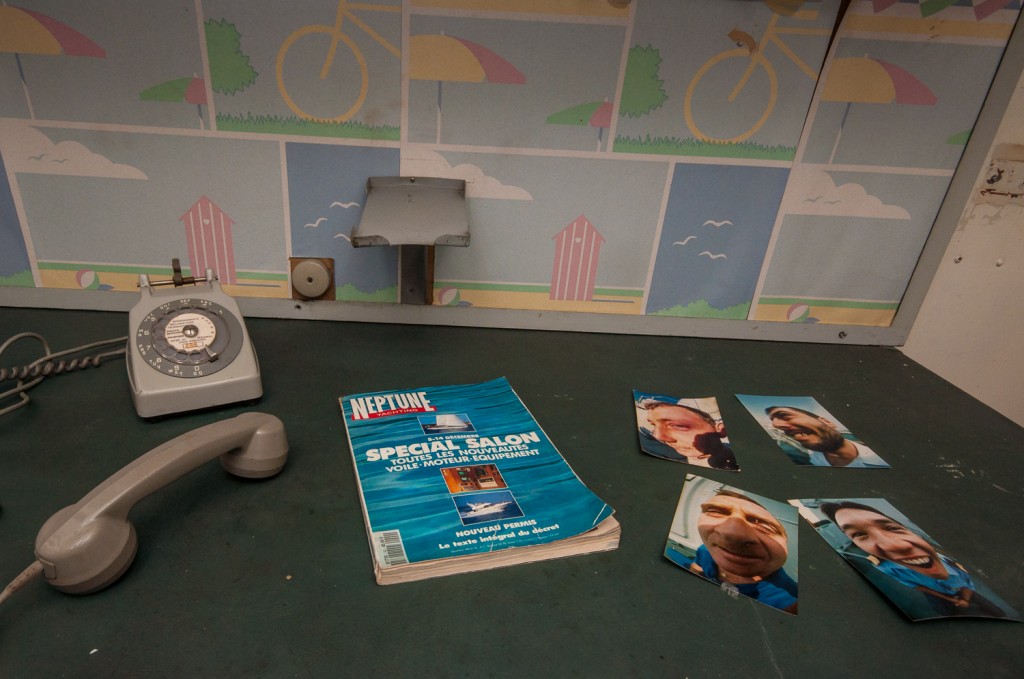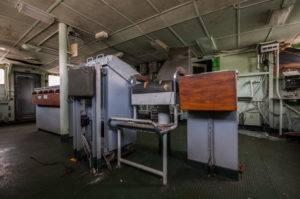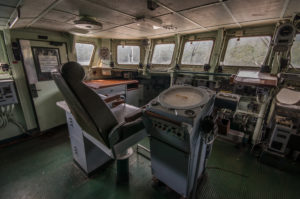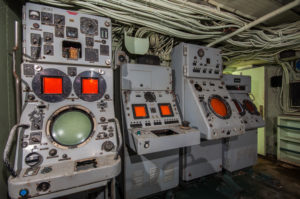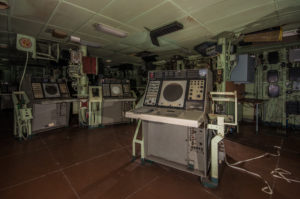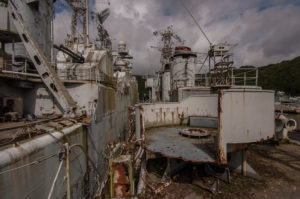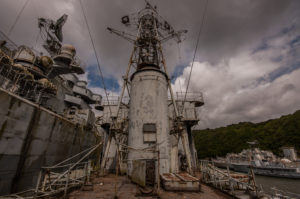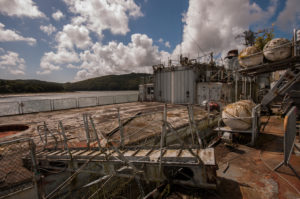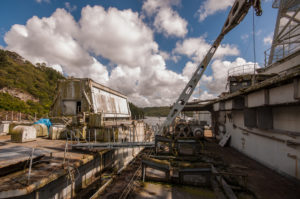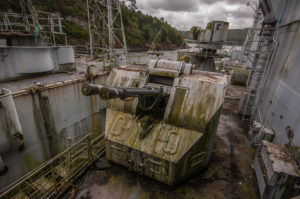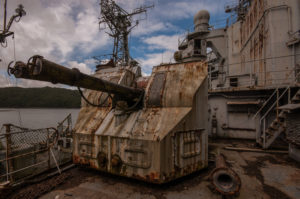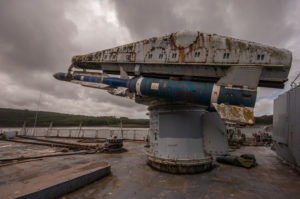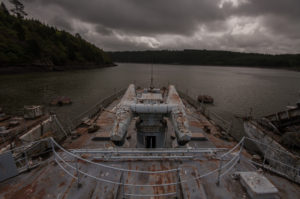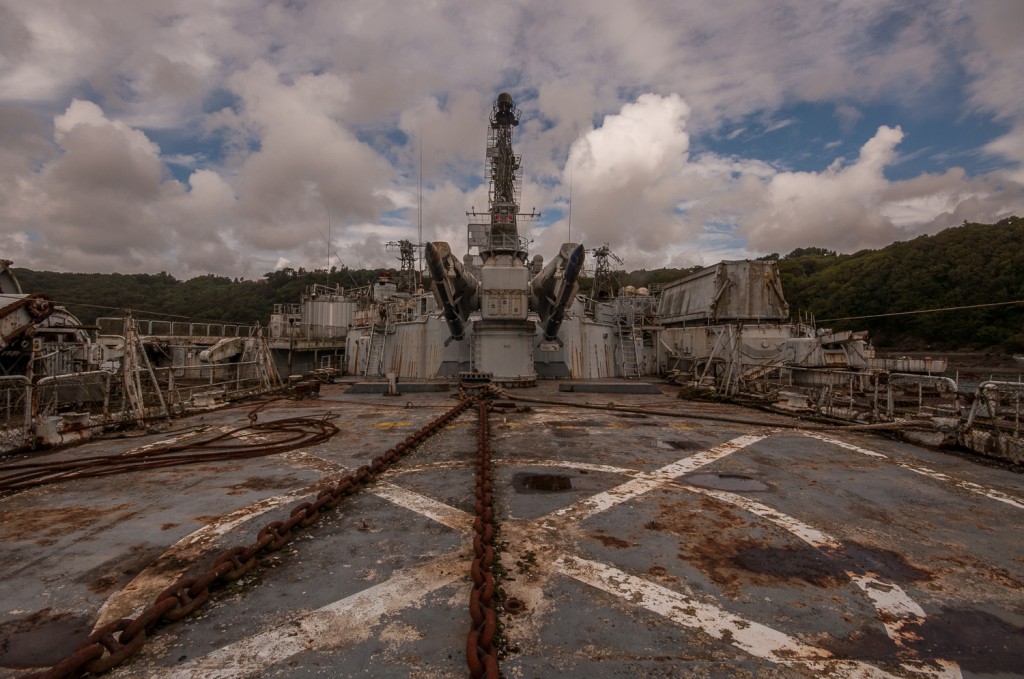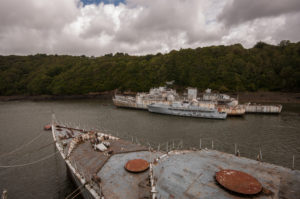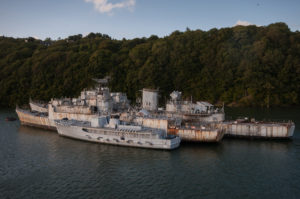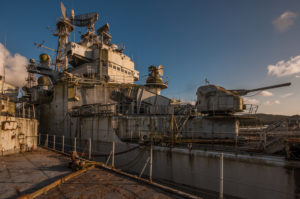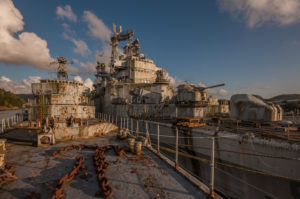One of my friends talked me into the crazy idea of visiting some abandoned warships, about 1.000km’s from home. When I went shopping for a boat, The “Explorer Pro 200” seemed like a good choise for me. Unlike the cheaper Hello Kitty model, this vessil had enough space to transport myself AND my gear. Plus paddles and pump were included. For safety reasons I also bought a large waterproof bag to protect my gear.
We gathered on friday evening at my friends house, loaded up the car with our gear and got on our way. A few hours later on a shady parking lot 2 other befriended explorers joined our forces. After the obligatory coffee, cigarettes and nonsense we continued our way to the coast. Several coffee-breaks and a speeding ticket later we finally arrived at the coast. The sky was already softly coloring blue, so we had to hurry up since our plan was to board the decaying fleet at first light. Whilst we rushed down the slippery path towards a small bay, we had our first casualty. One of the guys slipped and hurt the most useless bone in his body. It took him several months before he was able to sit properly again.
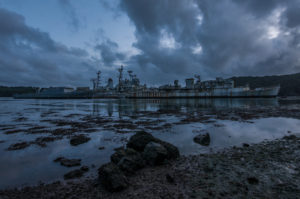 The very calm water made it easy for our inflatable fleet to board the abandoned warships, although the distance was misleading. We passed between 2 ships and headed for the biggest one. Only few minutes after we boarding the neighboring ship and hiding our boats, another boat approached. The fact the boat was motor driven was reason enough to hide. No urban explorer would buy or rent a motordriven vessil this size. We were trapped between a closed up empty ship and the bridge towards the main ship. If we passed the bridge we would be in full sight, so the waiting game began. 30 uncomfortable minutes we were finally out of their sight and found our way inside. It was time to setup our base-camp, make breakfast and fill up on nicotine and caffeïne.
The very calm water made it easy for our inflatable fleet to board the abandoned warships, although the distance was misleading. We passed between 2 ships and headed for the biggest one. Only few minutes after we boarding the neighboring ship and hiding our boats, another boat approached. The fact the boat was motor driven was reason enough to hide. No urban explorer would buy or rent a motordriven vessil this size. We were trapped between a closed up empty ship and the bridge towards the main ship. If we passed the bridge we would be in full sight, so the waiting game began. 30 uncomfortable minutes we were finally out of their sight and found our way inside. It was time to setup our base-camp, make breakfast and fill up on nicotine and caffeïne.
About The Mothball fleet
The mothball fleet counted about 8 ships on the time we visited. The largest ship was a 180meters long anti-air & missile cruiser that was used by the navy between 1956 and 1991. At the end of the 1960’s it became clear that the anti-air cruiser wasn’t able to compete against modern air attacks. Between 1970 and 1972 the ship underwent extensive modifications to become a missile cruiser.
In the early 90’s the ship was decommisioned and transformed into a museum untill they ran out of funds for maintainance. Under pressure of the marine, the museum ship closed it’s doors in 2006 and got send away to the mothball fleet where its awaiting scrapping amongst several other ships.
The insides:
The former cantines were one of the few places where daylight was able to slip in.
Most of the places were pitchdark though and we had to rely on our flashlights in order to navitate true the maze. For the pictures below I used my external strobe and fired it from various positions.
As an anti-air cruiser the ship housed over 3.000 people. After it’s transformation to missile cruiser it held over 1.000 people. It was equipped with a hospital ward and a dentist office.
Some polaroids of the former crew members
The bridge and command center:
A sideview and the communication tower
Bridges to the neigboring ships
The ship is equipped with 2 100mm guns
The Masurca missile launchers on the rear deck
The ship also carried a helicopter. The heli-pad is a reminder of this.
A view on the other boats in the mothball fleet:
The cruiser itself:
The Rescue Operation:
We spend all day exploring the ships and waited untill sunset to make our exit. However the water wasn’t as calm as it was in the morning and a strong current made it hard to reach the small bay where we departed.
Carefully I got into my boat, put my gear in it and started peddling. After only 2 strokes one of my peddles broke down, making it even harder to fight the strong current. Before I reached the other boats I had already drift away far, making it impossible to pass between them. A small pauze at one of the large buoys helped me regain some of my strenght, but as I continued the struggle my other peddle broke down as well. There I was with no peddles with the current taking me towards the sea. I jumped out of the boat into the cold water, tied the boat around my body and started swimming towards the coast whilst the rest of the inflatable fleet reached the landing bay. The seaweed strangled around my legs as I finally reached the cliffs. I realised I was completely exhausted and the first signs of hypothermia were showing up. From where I was stranded, it was impossible to reach our landing bay over land. Surrounded by angry crabs I signalled the rest of our crew and waited for them to organise a rescue operation.
Luckly my friends realised immediatly how serious the situation was and send our largest vessil with room for 2 people paddling. They gave me a new set of paddles and took my gear in their boat. I tried fighting the strong current once again, but it was hopeless. There was no strenght left in my arms and as the temperature dropped, the hypothermia got worse. A few dozen meter closer towards our landing bay I was stranded again on the sharp rocks. As soon as my gear was brought into safety, the rescue boat changed its crew and a second rescue operation was started. When they reached me, I tied my boat behind theirs and jumped into their boat.
Even with 2 people paddling it was very hard to reach the landing bay, but we succeeded.
Everybody was completely exhausted when we arrived at the cars and most of us hadn’t slept in the past 24 hours. We started driving for a few hours untill we found an abandoned hospital. Under the cover of darkness we searched for an empty room, put down our sleeping gear and spend the night there on the hard floor. Oh the irony when we found a room full of matrasses the next day..

